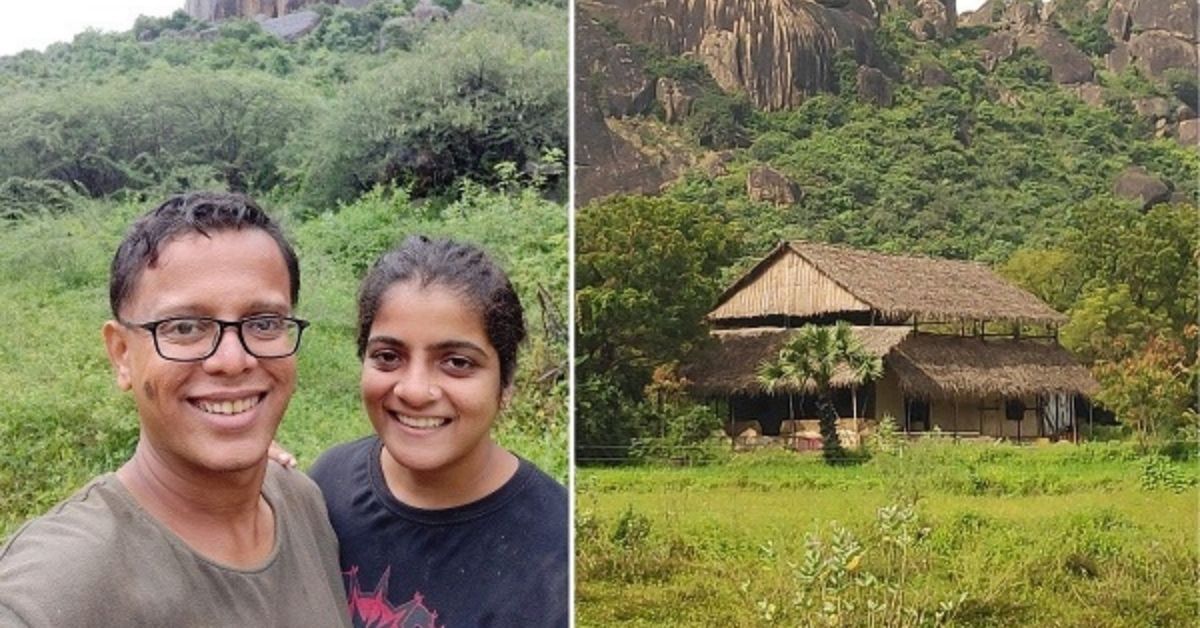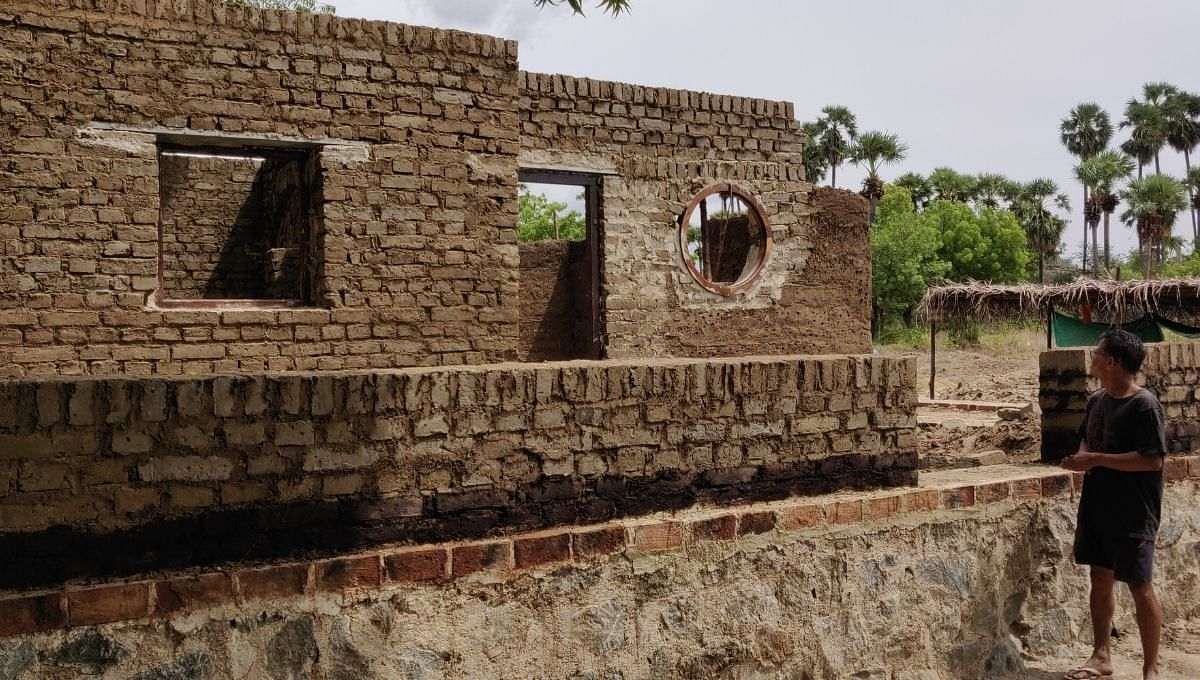
Until 2018, Sudhakar and Noushadya Iyer were living the way many of us city dwellers do. But today, their lives seem to be something most of us only dream about.
Born in India, Mumbai and Thanjavur respectively, the two crossed paths in Bengaluru for the first time. “I was working at a crowdfunding company, where Sudhakar was also doing a three-month fellowship,” recalls Noushadya.
Caught in the corporate rut, Sudhakar was looking for a way out, a gateway to a simpler way of living that also resonated with Noushadya. Their company could not have offered that, but the people raising funds for sustainable solutions through the firm could.
“I wanted to be sure that I wanted to make the switch, and to confirm this, we both decided to volunteer at an organic farm in Auroville. It was owned by one of our company’s clients that Sudhakar had connected with,” she says.
Getting their hands dirty with weeding, harvesting, and processing, the duo gained first hand knowledge about how produce is converted into valuable products. “It wasn’t just about tending to a farm, but also about how one builds an entire lifestyle to become environmentally conscious in the long run,” she says.
Today, Sudhakar and Noushadya own an 11.5 acre farm of their own amidst a serene landscape in Tamil Nadu, where they practice a zero waste sustainable lifestyle.
Once the decision was made
“During our volunteering period, we also started looking for land. We found a site in Tirunelveli, near Sudhakar’s father’s village Papanasam. Soon, our decision to shift was final and we bought it by July 2018,” Noushadya says.

Sudhakar & Noushadya
The land sits adjacent to a wildlife reserve and was frequented by all kinds of animals at the time. There were some 40 coconut trees too neglected to bear fruit and minimal infrastructure for other activities. The need of the hour was apparent to the couple.
“We began with fencing up the land to keep animals away from the farm forest we were planning to create. Starting with six acres, we invested about Rs 2 lakh in a solar fencing model. Then came the cultivation,” she says.
The farm forest
The coconut orchard was spread across an entire acre, which the duo decided to revive. “We don’t believe in monoculture. So to create a thriving environment, we planted a few new coconut trees of different species around the already existing ones, along with some timbre and fruiting trees bought from local nurseries,” Noushadya shares.
On a part of the acreage, they experimented with a layering model where banana was planted under the coconut trees, followed by ginger and turmeric under the banana. A separate kitchen garden was set up from where they source 80 per cent of the total household food today. Once a year, paddy and a few pulses are harvested for consumption.
“We have 10 native cows on the farm. They are not your regular gir or sahiwal breed but the hyperlocal one called thenpandi. We source our milk for consumption from them and all excess is made into curd and sold locally. We also tame chickens, whose eggs are utilised similarly,” she says.
The house
The grey water that feeds the papaya and banana circles on the farm comes from the couple’s house of residence, which they built amidst the greenscape itself. This is a 1,000 sq-ft space with an alfresco sitting area in the front.

Constructing the house
“We wanted to reduce our carbon footprint in every way possible. So we built the entire structure from mud, cow dung, lime and second hand doors and windows. Cement was used only in the terracotta tiling of the floor. The walls were whitewashed with lime instead of toxic paints,” she says.
The kitchen of the house was prepared with sun dried bricks. Noushadya says, “Usually, bricks are fired in a kiln, but we went for adobe bricks, which are made from earth and left to dry in the sun.”
With this being their first time doing such a thing, they were careful about each step. To test the bricks out before using them in the main structure, they built an outdoor composting toilet on the farm, which, as she shares, turned out to be a success.
The terrace, made from a south Indian flooring technique called ‘Madras Terrace’, was made of burnt bricks and lime and keeps the house cool on sultry summer days.
The entire building was set up by cob method of construction, which uses manual labour to knead the materials into structure. She reveals that for this process, a hefty chunk of the investment was fed into sourcing local masons as the raw material was easily available from the land.
While most of it was a ‘learn as you go’ experience, a lot of the construction process was kickstarted by a three-day workshop on natural building by Thannal Natural Homes. Noushadya reveals that an old friend from the construction business also came forward to help, along with volunteers that the couple gathered through social media shoutouts.
Living off the land
After comfortably feeding themselves from farm fresh produce, Sudhakar and Noushadya sell the surplus in different forms to the people around them.
The coconuts are manufactured into cold pressed oil, while wildly growing holy basil and curry leaves are powdered and sold as condiments. “We have palmera trees growing around the fence. We tap it for sap and process it into organic palm jaggery. With the rise of processed sugar, not many people are doing this around here, so we thought it was a good idea to keep an endangered art going when we could,” she shares.
If you would like to browse their products or volunteer with them, visit their website here.









